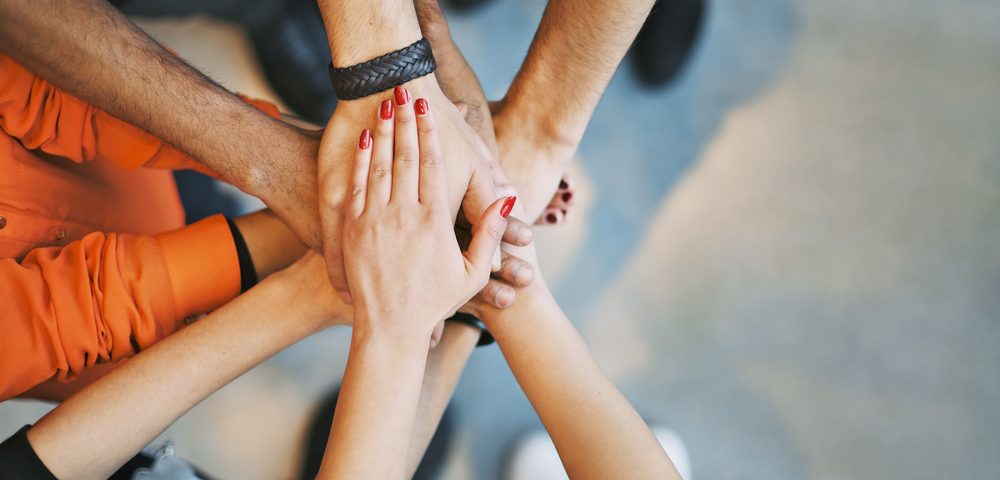We Must Believe Girls and Women with Hemophilia Who Say They Are in Pain

Over the past few years, I have had the pleasure of connecting with many women who are diagnosed with hemophilia A, hemophilia B, or as symptomatic carriers. These women have so many stories to share. The thread of commonality in their journeys is their struggle to have their pain and bleeding legitimized, acknowledged, and treated. Many women have integrated the message they were told for so many years: “Women cannot get hemophilia.” As a result, women often do not receive the care they need and deserve.
Unexplained bleeding
I had stitches five times before I was 5 years old. Whenever I fell and cut myself, the bleeding would not stop without my being sewn up. Despite the unusual bleeding and a father with severe hemophilia A, no one thought to attribute the bleeding to hemophilia. I remember being held down in hospitals, kicking and screaming, while stitches were sewn. These are my first “hemophilia” memories.
In elementary school, I had several injuries that took forever to heal, but what I remember more was how left out I felt. I wanted to run, and I really wanted to be good at sports — but I sucked. I was terrible at sports because I lacked endurance. Within minutes of starting an activity with full exuberance, I would be slowed by pain — mostly in my ankles. I could not keep up. People thought I was lazy and uncoordinated. I was the last picked for every team. Even though I desperately longed to be good at sports, I began to despise them. Sports represented rejection, loneliness, and not measuring up.
Asking for help
When I was in middle school, I became more vocal about my struggles. My ankles hurt during PE and I hated it. I begged my school and my doctor to let me out. The last quarter of 7th grade I got a reprieve when my doctor wrote an excuse through the end of the year. I took a second elective instead of PE. It felt so good to not be in daily pain. The reprieve was short-lived, though, and I was forced back into PE the following year.
When I asked to be excused, I was thought of as lazy and not wanting to participate. Little did they understand that I yearned to participate, but also wanted to be pain-free. No one believed my pain. My ankle swelling was there, but minimal, so it was thought that the swelling could be ignored. I was being taught to ignore my body and its signals and how to discount pain, instead of how to address and treat it.
I went to my school counselor and begged her to help me get out of PE. As if to teach me a lesson, she sent me for a day to the adaptive PE class. At the time, this was a class for students with significant disabilities, most of them cognitive. Through my adult eyes, I know they sent me there as a deterrent. But I already felt isolated and different. The choice they gave me was to suffer in silence and pain or to be in a class that had the potential to cause even more peer isolation and peer bullying.
Courage to speak out
I wish I had known then what I know now, because I would have fought harder. Perhaps if I struggled with the same issues today I would eventually be heard. Maybe I would speak until diagnosed with the mild hemophilia I have. That said, even today, many girls and women struggle for years to obtain a diagnosis. Thankfully, this is starting to change.
The pain of girls and women must be acknowledged. When a girl or woman in a family with a bleeding disorder says she is in pain, she is most likely in pain. ALL children in families with bleedings disorders should be tested. I cannot tell you how many individuals I know who have their boys tested at birth but wait years to test their daughters.
We have an obligation to test both boys and girls at an early age so we can properly treat them if there is a bleeding episode. They need to know if they have a bleeding issue before a bleeding incident occurs. One never knows when a person could be in an accident and need treatment. Our girls deserve protection, too.
***
Note: Hemophilia News Today is strictly a news and information website about the disease. It does not provide medical advice, diagnosis, or treatment. This content is not intended to be a substitute for professional medical advice, diagnosis, or treatment. Always seek the advice of your physician or another qualified health provider with any questions you may have regarding a medical condition. Never disregard professional medical advice or delay in seeking it because of something you have read on this website. The opinions expressed in this column are not those of Hemophilia News Today or its parent company, Bionews Services, and are intended to spark discussion about issues pertaining to hemophilia.







Leave a comment
Fill in the required fields to post. Your email address will not be published.